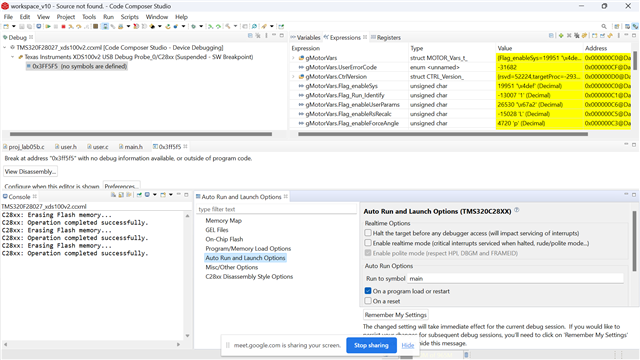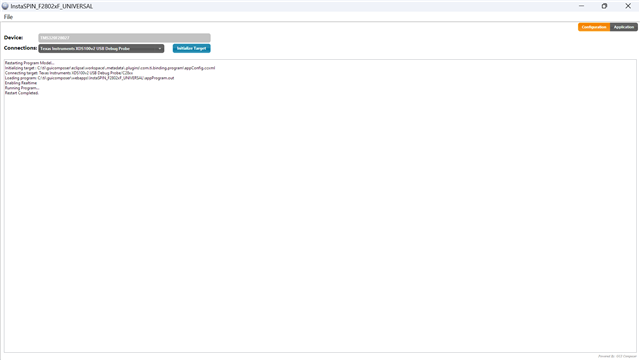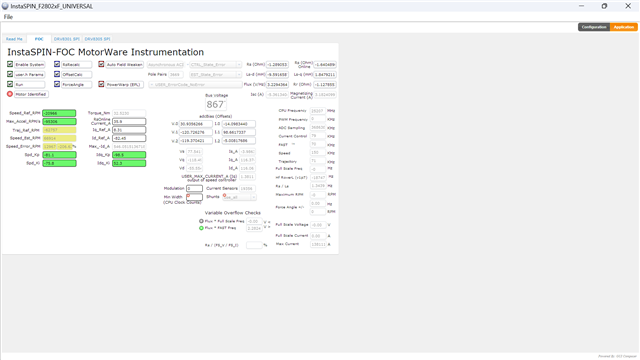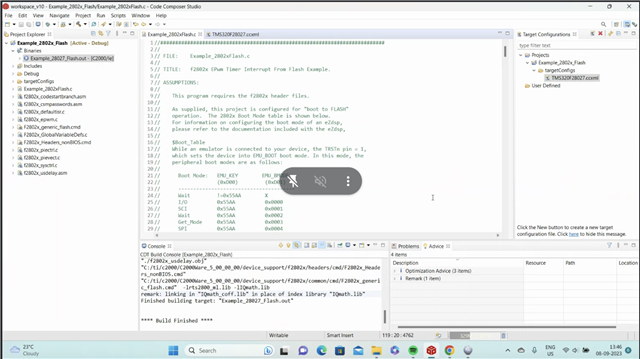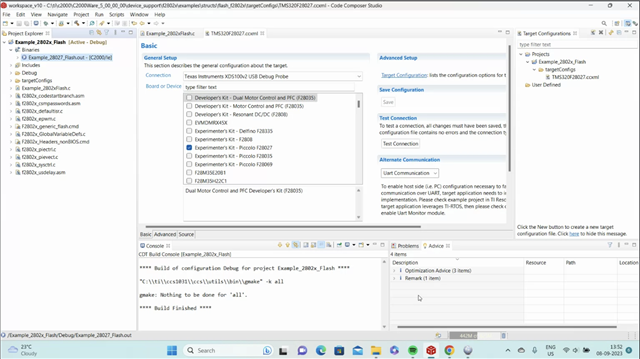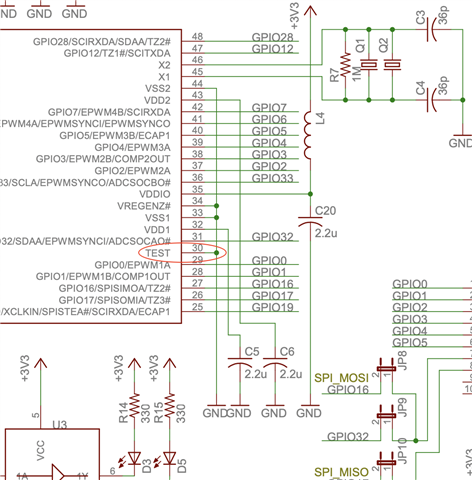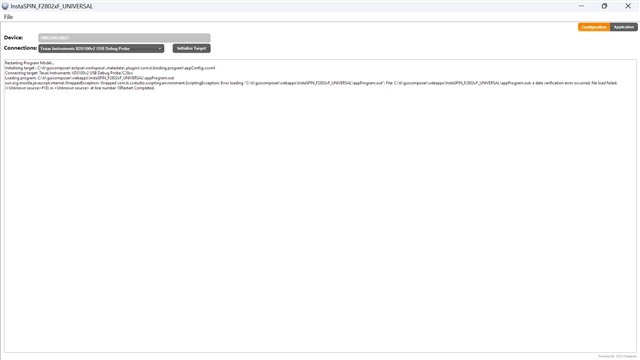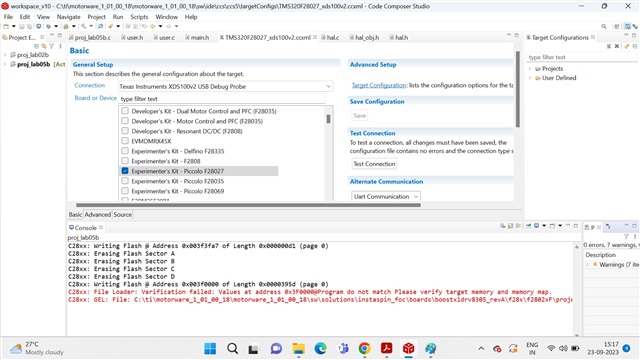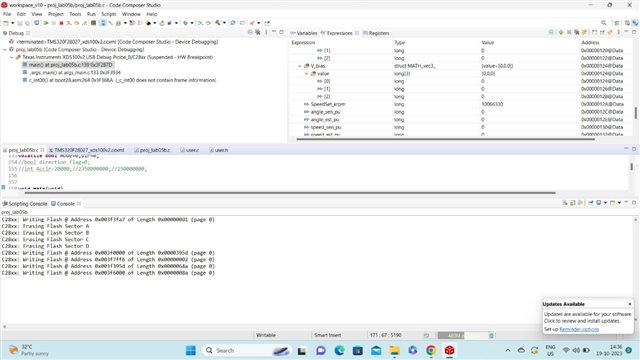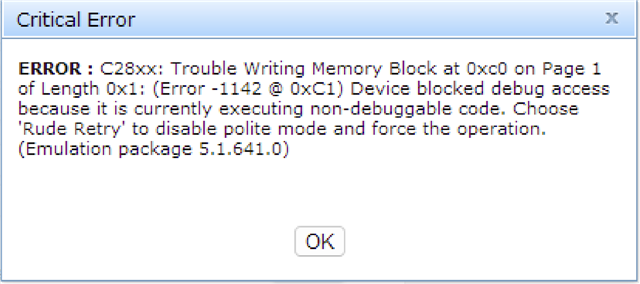Other Parts Discussed in Thread: LAUNCHXL-F28027F, BOOSTXL-DRV8305EVM, C2000WARE, TMS320F28027
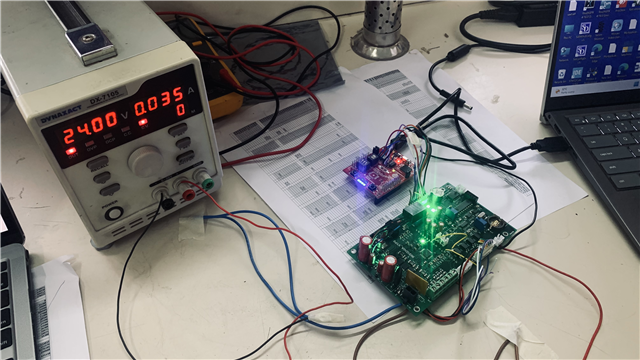
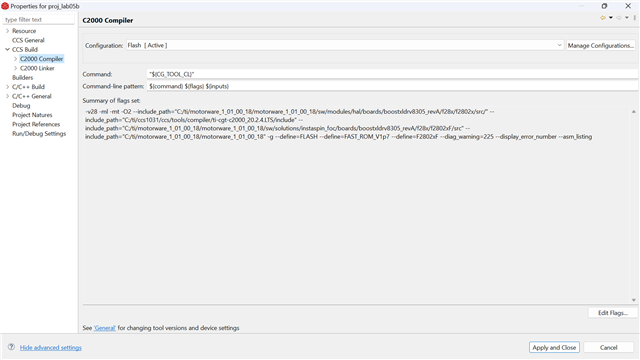

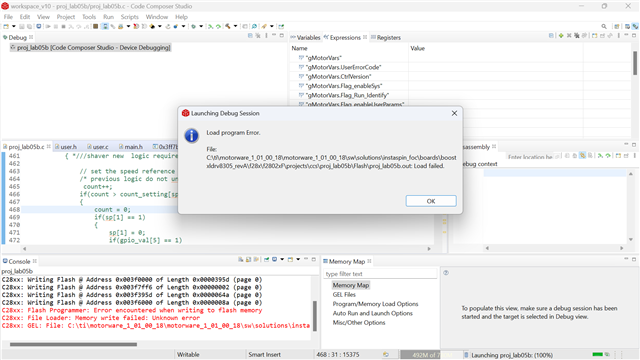
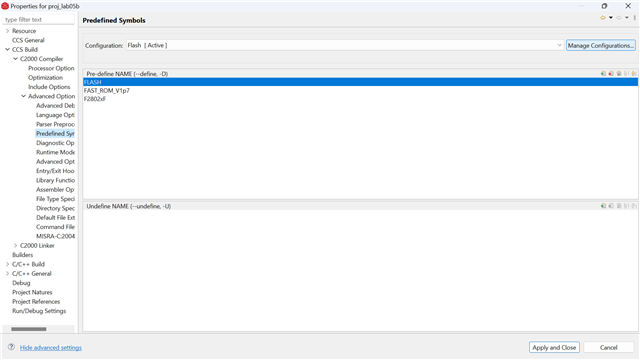
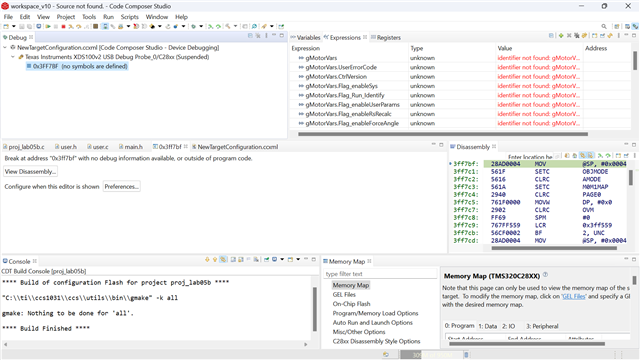
TARGET MCU : TMS320F28027F
REFERENCE DESIGN : LAUNCHXL-F28027F + BOOSTXL-DRV8305EVM
CCS VERSION : 10.3.1
EXAMPLE PROJECT : LAB 05 (b)
---------------------------------------------------------------------------------------------------------------------------------------------------------------------------------------------------
ERROR1 : 0X3FF7BF ( no symbols are defined )
ERROR 2 : Load Program Error
---------------------------------------------------------------------------------------------------------------------------------------------------------------------------------------------------
ISSUE : Unable to load the file in custom board to test the functionality
We have designed custom board taking reference from LAUNCHXL-F28027F + BOOSTXL-DRV8305EVM
W are using another LAUNCHXL-F28027F ( from which TMS320F28027F is disassembled ) as a debugger ( Image Attached )
Upon connection of debugger to target hardwware & checking TEST CONNECTION. The debug connection is becoming successful.
Considering debug connection are correct, we are trying to load program given under Lab 05 ( b).
We have ensured the predefined symbols (Project properties > Build > C2000 Compiler > Predefined Symbols) "FLASH", "F2802xF" and "FAST_ROM_V1p7" defined.
Despite of all above, we get Load Program Error ( Image attached )O
Also we get 0X3FF7BF ( no symbols are defined )
We are absolutely not getting any clue how to resolve this.
Please suggest.



